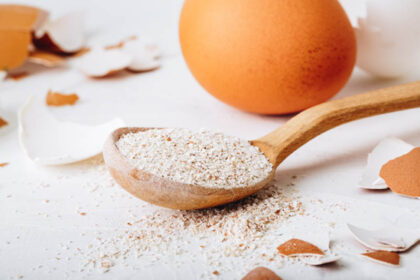In the relentless pursuit of a germ-free environment, we often turn to the convenience of common disinfecting wipes, trusting them to keep our homes and surfaces free from harmful bacteria and viruses. However, what if the very products we rely on to protect us are unwittingly introducing a new set of dangers into our lives? The alarming truth is that many commercial disinfecting wipes harbor toxic chemicals that extend beyond their advertised germ-killing prowess.
In this article, we’ll delve into the unsettling reality that these seemingly harmless wipes may be exposing our noses, nervous systems and more to hazardous substances. But fear not – there’s a simple and cost-effective solution. Discover how to safeguard your health, save money, and take control of your disinfecting routine by creating your own wipes using just five easily accessible ingredients. It’s time to rethink our approach to cleanliness and prioritize both the safety of our homes and the well-being of our bodies.
Dangers Of Disinfectant Wipes
Since the pandemic’s outset, the global use of disinfectants has gone through the roof. Clorox dramatically boosted production of its wipe packs to 1.5m a day by mid-2021, and an industry trade group said 83% of consumers surveyed around the same time reported they had used a disinfectant wipe in the last week.
But as schools reopened, a group of toxic chemical researchers grew concerned as they heard reports of kids regularly using disinfectant wipes on their classroom desks, or teachers running disinfectant foggers.
The researchers knew the disinfectants did little to protect consumers from Covid, and were instead exposing kids at alarming levels to what they say are a dangerous chemical group – quaternary ammonium compounds, also known as QACs, or “quats”.
Quats are common components in popular disinfectant wipes and sprays, especially those that claim to “kill 99.9% of germs”. But in a new peer-reviewed paper, the researchers assembled the conclusions from a fast-growing body of quat studies that point to several main issues: the chemicals are linked to serious health problems, they contribute to antimicrobial resistance, they pollute the environment and they are not particularly effective.
Scientists Warn “Quats” Destroy Our Respiratory System & Are In 95% Of American Homes Right Now: What Are They & How To Avoid Them
“We did the review to answer the question of ‘What do we really know?’ and what was most surprising was there was a lack of health hazard data in the majority of QACs, and the few that have been studied have red flags,” Researchers say.
The paper – developed by a group of toxics researchers from academia, government agencies and non-governmental organizations – highlights quats’ risks and calls on regulators to eliminate the chemicals for non-essential uses.
QACs are a class of hundreds of chemicals also used in paints, pesticides, hand sanitizers, personal care products and more. Among other health issues, recent research has linked them to infertility, birth defects, metabolic disruption, asthma, skin disorders and other diseases.
The main exposure is through disinfectants, and most Americans are thought to have some level of the chemicals in their blood. Recent research that checked the serum of more than 200 Indiana residents before and after the pandemic started found quat levels roughly doubled, and while about 83% had detectable levels before the pandemic, 97% did after.
Humans can end up with quats in their bodies through several routes. The chemicals can be dermally absorbed or orally ingested after one touches a disinfectant wipe, or when they stick around on surfaces after the use of disinfectants. Inhalation is also a risk, especially with spray disinfectants, and the chemicals are also known to attach to dust and go airborne.
Among the groups most at risk are small children because the wipes are so frequently used in daycare or schools, elderly folks in supervised care, healthcare workers, cleaning professionals and others who frequently use disinfectants.
The chemicals are persistent and thought to be bio-accumulative, meaning they accumulate in human bodies and the environment. Quats have been found to be toxic to fish and “a substantial body of evidence” suggests they probably contribute to the creation of superbugs, or antibiotic-resistant pathogens, the paper states.
It also calls into question quats’ efficacy. Disinfection with quats often has only a small benefit over plain soap and water when it comes to killing germs, research suggests, and quats are not thought to be needed to stop the transmission of Covid, which happens through the air and touching infected surfaces.
Still, companies continue to use quats and consumers buy the disinfectants in high volume, which Carignan said may be a “a market demand situation where maybe there’s some confusion about when you need to disinfect versus when you just need a cleaner.”
Soap and water is safest for general cleaning purposes, she added, and some resources offer alternatives to harsh cleaners. Disinfectants should generally be reserved for when someone has the stomach flu or other illnesses for which disinfectants are effective, and even then they should not be used in a cavalier way.
Researchers stress the need for regulatory agencies to protect consumers. Labeling requirements are inconsistent among product classes – they must be included on pesticide labels, they do not need to be included on paint labels, and they appear to only be sometimes listed on disinfectant labels.
Researchers also call on regulatory agencies to provide more clarity around the chemicals, including more research on quats’ health effects, better labeling and elimination of non-essential uses.
“Chemicals of concern should only be used where their function is necessary for health and safety, or is critical for the functioning of society, and no safer alternatives exist,” the study states.
Make Your Own DIY Washable Disinfecting Wipes
Tools:
- Measuring Cup
- Airtight Container (Reuse Your Old Disinfectant Wipes Container Or Mason Jar)
- Small Microfiber Towels (I cut mine in half or 4ths depending on how large you want them, and the size of the container)
Ingredients:
- 1 Cup White Vinegar
- 1 Cup Water
- 1/2 Cup Vodka Or Rubbing Alcohol
- 5-10 Drops Lemon Essential Oil Or Grapefruit Essential Oil
Instructions:
- Mix ingredients listed above well in your airtight container.
- Line your microfiber towels up in a line, allowing them to overlap by 1-2 inches.
- Roll them up, grabbing the next towel underneath so they are “connected” in a way where you grab 1 out and the next one pops up.
- Place towels into airtight container with the liquid mixture, making sure the towels go to the bottom to soak up entire mixture, and let them sit for at least 15 minutes before using.
- When ready to use, grab first towel from the outside of the roll, and throw it in your hamper when your done.
- Repeat process when you’ve used all of your wipes.
As we navigate the complex landscape of cleanliness and germ-fighting, it becomes increasingly evident that the very products designed to protect us may pose unforeseen risks. Our investigation into the dangers of quaternary ammonium compounds, or “quats,” commonly found in commercial disinfecting wipes, reveals a concerning reality. These chemicals, once thought to be benign, may be exposing us to potential harm, affecting not only our immediate well-being but also the long-term health of our nervous systems.
However, the silver lining lies in our ability to take control of our cleaning routines. By opting for a DIY approach, we empower ourselves to safeguard our homes without compromising our health. With just four readily available ingredients, you can create effective and safe disinfectant wipes that not only rival their commercial counterparts in efficacy but also eliminate the risk of exposure to harmful chemicals. It’s a simple yet powerful solution that puts your well-being at the forefront.
In conclusion, as we bid farewell to the potentially hazardous quats lurking in common disinfecting wipes, let’s embrace the freedom to make informed choices about the products we use in our homes. By prioritizing health, safety, and a touch of resourcefulness, we can redefine our approach to cleanliness, ensuring a brighter, toxin-free future for ourselves and our environments.
Recommended Reading:
Scientists Warn “Quats” Destroy Our Respiratory System & Are In 95% Of American Homes Right Now: What Are They & How To Avoid Them
6 Natural Ways To Boost This Important Hormone In Your Body, Which Is Linked To Sex Drive, Energy Levels & General Well-Being In Women Of All Ages





